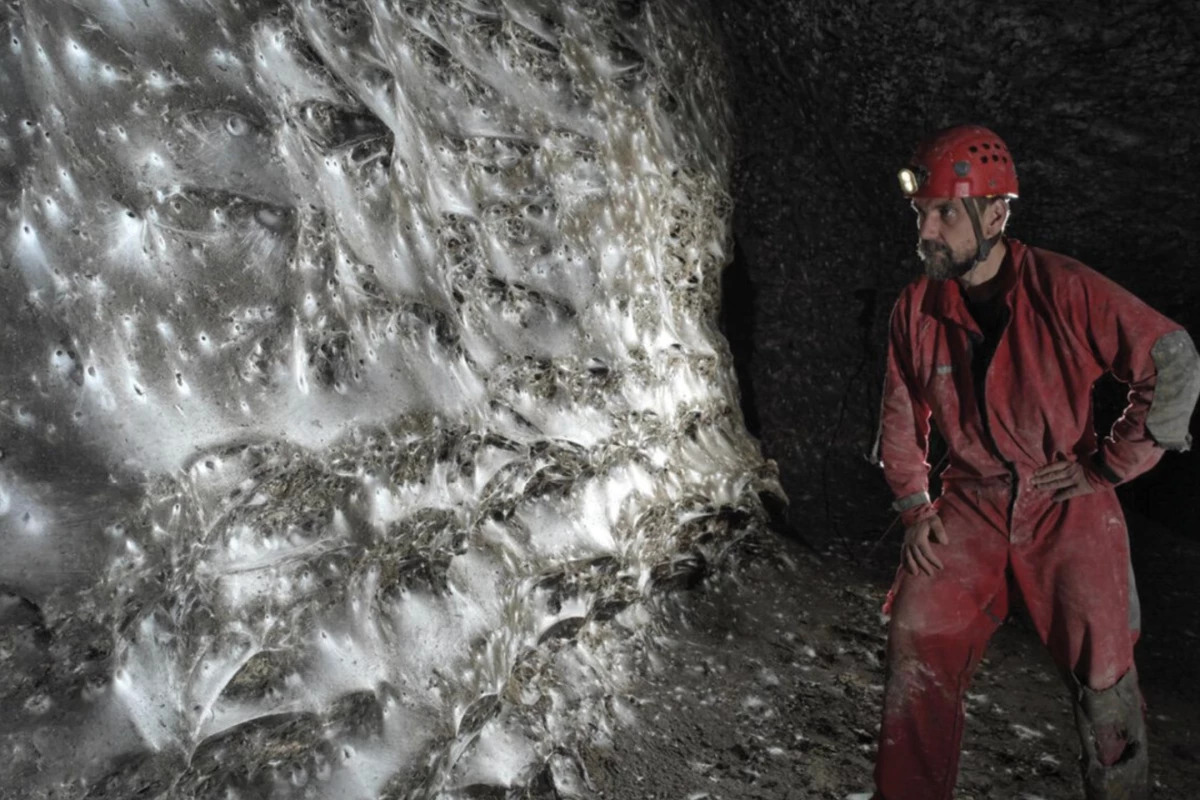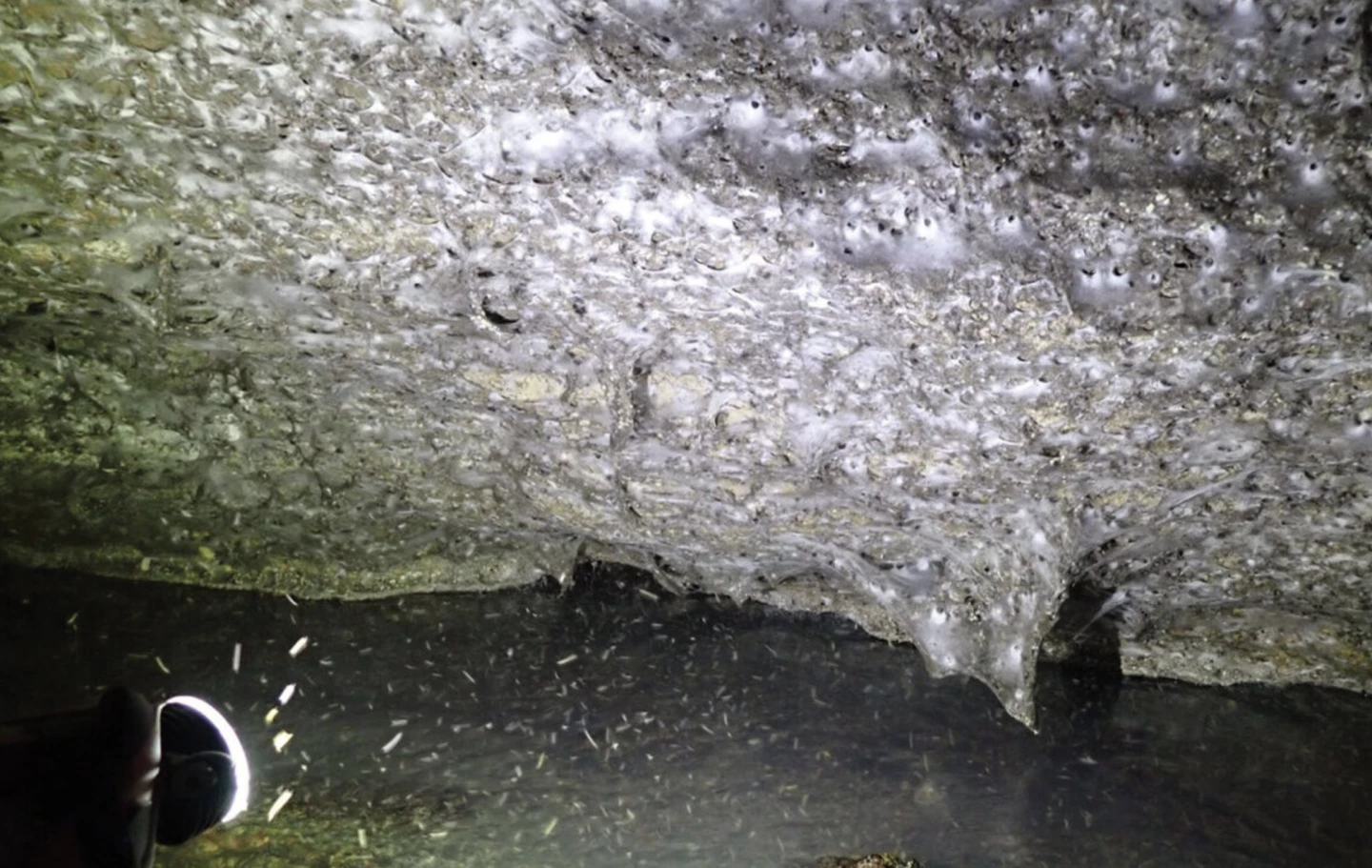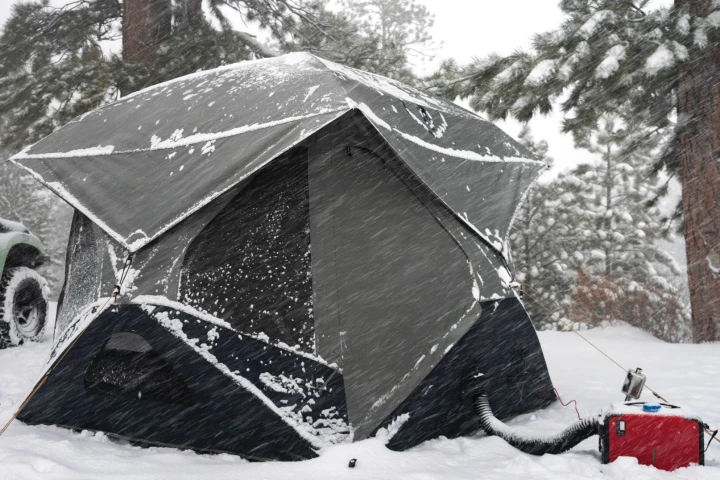 The colonial spider web in Sulfur Cave, is home to a mixed colony of Tegenaria domestica and Prinerigone vagans spiders, feeding on the chironomids that fill the air. Marek Audy/Subterranean Biology/(CC By 4.0) –
The colonial spider web in Sulfur Cave, is home to a mixed colony of Tegenaria domestica and Prinerigone vagans spiders, feeding on the chironomids that fill the air. Marek Audy/Subterranean Biology/(CC By 4.0) –
An international team of European researchers, including scientists from the Czech Speleological Society, came across it while undertaking a wildlife survey in 2022, and were not just taken aback by the size of the multilayered web but what it housed: around 69,000 Tegenaria domestica and 42,000 Prinerigone vagans spiders living side by side in this massive silk structure with an estimated surface area of 106 sq m (1,141 sq ft)
It’s the first time either species has ever been seen living cooperatively, and the first recorded instance of colonial web-building in what’s known as a chemoautotrophic cave.

This cavern, known as Sulfur Cave, houses a chemoautotrophic ecosystem sustained not by sunlight but chemosynthesis – or the process of converting chemical energy into organic matter. Here, sulfur-oxidizing bacteria grow in thick white biofilms on wet rock and sediment. These microbes are then eaten by small invertebrates such as midge larvae and isopods, which are in turn preyed on by larger insects like spiders, beetles, and centipedes. The entire ecosystem is self-contained and independent of external input, running on the energy released when bacteria convert toxic hydrogen sulfide into sulfate.
This remarkable life support system is all thanks to a warm toxic stream that runs through it, with its water a constant temperature of about 26 °C (79 °F) and loaded with dissolved hydrogen sulfide – which gives it its distinctive rotten-egg odor.
Be it the smell or the spiders, Sulfur Cave is unlikely to be landing on anyone’s itinerary for their next Greek vacation, but you can bet this is a big deal in the world of entomology. Normally, T. domestica – also known as the common house spider – is a solitary hunter that spins a private funnel web under rocks or in the corners of basements. Here, thousands of those funnels merge into a single, multilayered structure draped across the cave’s walls, where thousands of individuals live peacefully side by side in overlapping webs. What’s more, the researchers were surprised to find no evidence of the spiders’ usual cannibalistic aggression.
Even more incredible was the discovery of another species – P. vagans, a smaller, sheet-web builder – also calling this mega-structure home. In other circumstances, T. domestica would prey on the smaller spider, but here they were also co-existing in harmony.
Understanding how more than 110,000 spiders can live in peace on this huge web tells us a lot about the roles of competition and resource availability in an ecosystem. in the cave, the air close to the stream is packed with tiny Tanytarsus albisutus midges, whose larvae feed on the bacterial biofilms at the water’s edge. Their density – 45,000 per sq m (about 4,180 per sq ft) – provides an all-you-can-eat buffet for the spider colony, which essentially eradicates any food competition that would normally exist. Further analysis confirmed that the spiders’ carbon and nitrogen signatures traced back to sulfur-oxidizing microbes, not plants that underwent photosynthesis like those above ground.
Researchers conducted further genetic testing and found that the Sulfur Cave spiders shared unique DNA not found in populations outside, suggesting they’ve been evolving in isolation, and their microbial makeup was also much simpler. The scientists also discovered that the T. domestica spiders laid significantly fewer eggs in clutches than above-ground individuals, which they believe is a mix of the high-energy demands of the dark, low-oxygen environment and the fact there are no predators so they don’t need to produce as many eggs to maintain a stable population.
“Our findings unveil a unique case of facultative coloniality in this cosmopolitan spider, likely driven by resource abundance in a chemoautotrophic cave, and provide new insights into the adaptation and trophic integration of surface species in sulfidic subterranean habitats,” the researchers noted.
Recently, scientists found that the microbes living on cheese had also evolved different strategies to exist in darkness, revealing how rapidly life can adapt in challenging environments.
Sulfur Cave may sound like Hell to humans, but it provides a rare glimpse into how flexible life can be when conditions change. Cut off from sunlight, these common surface spiders have …[for the balance of this very interesting article please visit: https://newatlas.com/biology/sulfur-cave-largest-spiderweb/]
–
The research was published in the journal Subterranean Biology.
Source: Czech Speleological Society via Phys.org
–
Tags
























